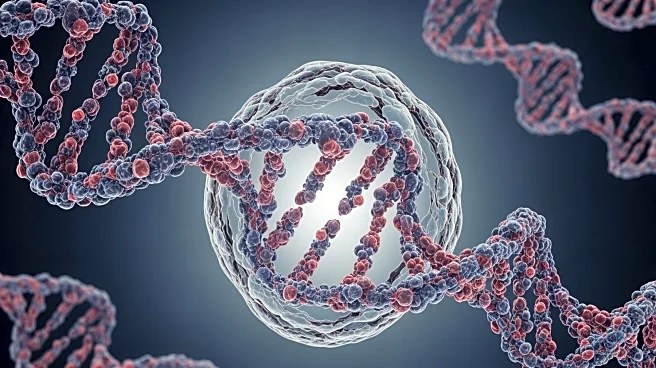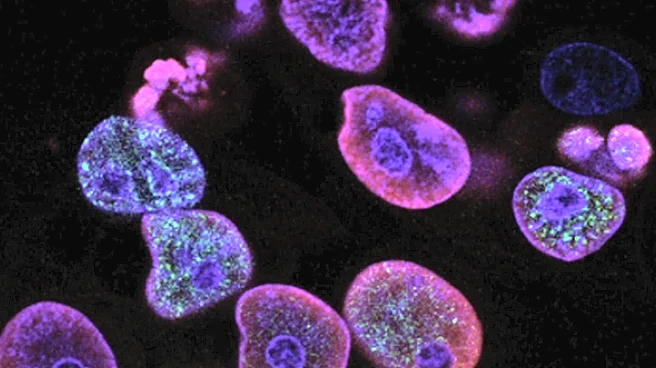What's Happening?
Recent research has demonstrated that RNA structure can significantly modulate the activity of the Cas13 enzyme, enabling enhanced detection of mismatches. The study involved designing RNA molecules with minimal internal secondary structure to optimize
the binding and activity of Cas13, a key component in CRISPR-based diagnostic tools. The research was supported by various health organizations, including the US Centers for Disease Control and Prevention and the World Health Organization. The findings suggest that by manipulating RNA structures, it is possible to improve the specificity and sensitivity of CRISPR diagnostics, which are crucial for detecting viral infections and genetic mutations.
Why It's Important?
This advancement in RNA structure research has significant implications for the field of molecular diagnostics. By enhancing the precision of CRISPR-based tools, the study could lead to more accurate and reliable diagnostic tests for a range of diseases, including viral infections like COVID-19 and influenza. Improved mismatch detection can also aid in the identification of genetic mutations, potentially leading to better-targeted therapies and personalized medicine. The ability to fine-tune RNA structures for optimal enzyme activity represents a major step forward in the development of next-generation diagnostic technologies.
Beyond the Headlines
The research highlights the potential for RNA structure manipulation to address challenges in CRISPR diagnostics, such as off-target effects and false positives. This could lead to broader applications in public health surveillance and disease management. The study also underscores the importance of interdisciplinary collaboration in advancing biotechnological innovations, as it involved contributions from multiple international health organizations and research institutions.













